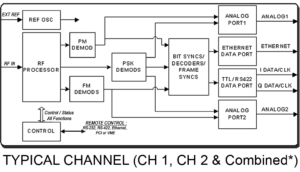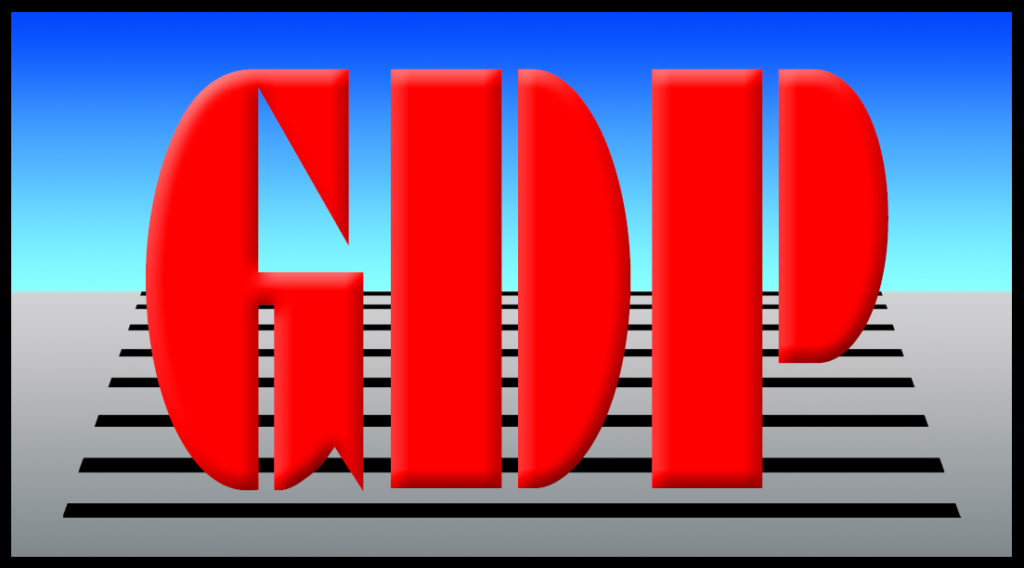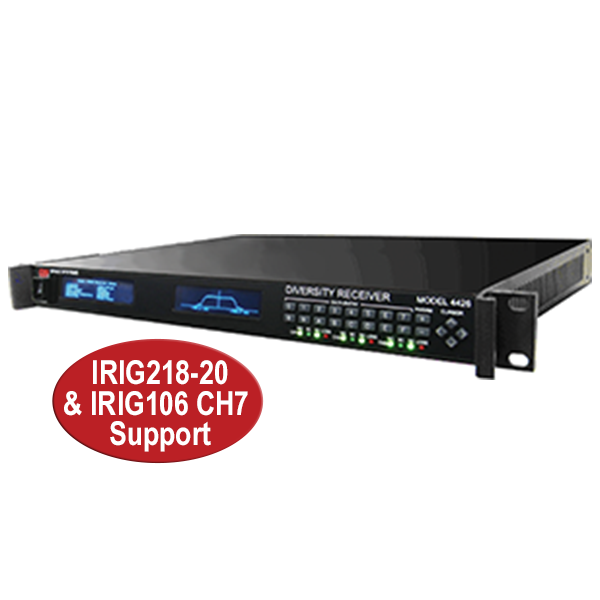Model 4426 1U Digital RF Receiver Single/Dual Channel
- NEW! 70MHz Test Modulator Output function
- IRIG Chapter 7 Serial-to-Ethernet function, supporting the IRIG Chapter 11 protocol
- Supports IRIG 218-20
- Adaptive Equalization (AEQ) to combat the effects of multipath distortion and fading on a telemetry signal, allowing the receiver to present a higher fidelity output (Watch our Video/View Performance Evaluation)
- Diversity Combiner option to process an RF signal received by two receivers to produce the best possible output
- Supports Low Density Parity Check (LDPC) codes on the downlink
The 3rd Generation GDP Model 4426 Digital RF Receiver is available in single or dual channel configurations in a 1U rack-mounted chassis. Each channel is completely independent and includes an integrated solution consisting of an RF Signal Processor, Demodulators, optional Bit Synchronizers and Frame Synchronizers. Diversity Combiner (Pre-D and Post-D) is optional. This state-of-the art receiver provides a compact, cost competitive, flexible solution to a wide variety of communications link scenarios.
The Model 4426 processes 3 RF Bands: S Band, 2185 MHz to 2485 MHz; Upper L Band, 1700 MHz to 1850 MHz; Lower L Band 1427 MHz to 1545 MHz. Additional RF bands are available (i.e. P Band 100 MHz to 1100 MHz, C-Band …). Multi-Band options are also available.
The demodulation process, as well as the baseband bit synchronization process, is totally performed in the digital domain. Signal acquisition is performed by scanning the IF within the programmed acquisition band centered about the selected Carrier frequency. Waveforms are additionally scanned for acquisition at the subcarrier frequencies. Once signal acquisition is complete, synchronized signal tracking is performed whereby continuous validation of the lock state is maintained.

A variety of optional FEC decoders are available and two fully programmable frame synchronizers (pattern detection) are provided with the bit synchronizer option.
With the Bit Synchronizer option, data is output via TTL and RS- 422 outputs.
The unit supports an optional Ethernet output interface by which frame synchronized byte aligned data can be transported. UDP/IP transport is provided for raw data. IRIG-106 Chapter 10 compatible output is also available.
An Encapsulated data and data-quality output may be included that supports the GDP Best Source Selector products.


